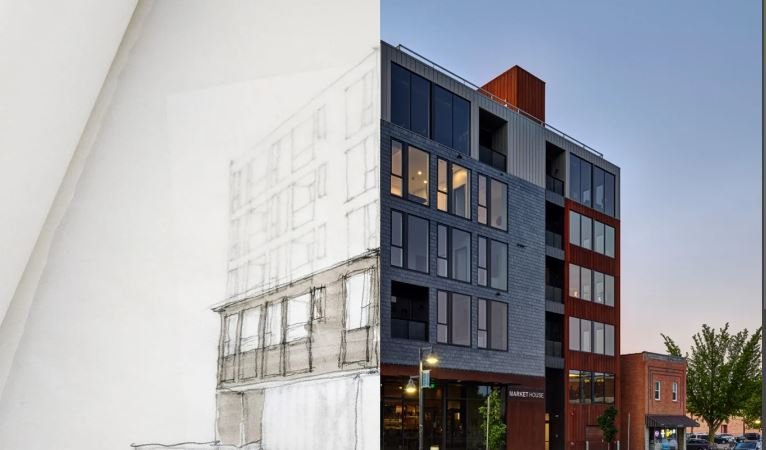The Architectural Design Process Explained
Architectural design processes transforms creative ideas into tangible structures that define our built environment. This blog provides an in-depth exploration of the architectural design process, outlining its key steps, considerations, and the interdisciplinary collaboration essential for creating functional, innovative, and aesthetically pleasing buildings.

1. Programming and Project Definition
The architectural design process begins with programming and project definition, where architects and clients collaborate to establish project goals, requirements, and constraints. This phase involves conducting site analysis, assessing environmental factors, zoning regulations, and understanding user needs. Clear communication and documentation are crucial to ensure alignment between stakeholders and to establish a solid foundation for subsequent design phases.
2. Concept Development and Ideation
Concept development involves ideation and sketching, where architects translate project requirements and site analysis into conceptual designs. This phase emphasizes creativity and innovation, exploring different architectural styles, spatial arrangements, and material options. Architects often use digital tools and physical models to visualize and refine initial concepts, considering factors like sustainability, functionality, and aesthetic appeal.
3. Schematic Design
During the schematic design phase, architects develop detailed drawings and diagrams that illustrate the overall layout and spatial relationships of the building. This stage includes floor plans, elevations, and sections that communicate the project’s design intent. Schematic designs undergo iterative refinement based on client feedback. Regulatory requirements, and technical considerations related to structural integrity, building codes, and accessibility standards.
4. Design Development
In the design development phase, architects refine the chosen schematic design into a more detailed and comprehensive plan. This involves specifying materials, finishes, mechanical systems, and integrating sustainable design strategies. Collaboration with engineers, consultants, and contractors ensures technical feasibility and alignment with project goals. Design development documents serve as a basis for obtaining regulatory approvals, cost estimation, and preparation for construction documents.
5. Construction Documents
Construction documents comprise detailed drawings, specifications, and technical documentation that provide instructions for building construction. Architects create construction documents during this phase to communicate the precise dimensions, materials, and assembly methods to contractors and builders. The documents include structural drawings, electrical plans, HVAC (heating, ventilation, and air conditioning) layouts, and other essential details necessary for obtaining building permits and executing the construction phase.
6. Bidding and Contractor Selection
Once construction documents are complete, the project enters the bidding phase, where contractors review the project requirements and submit competitive bids. Architects assist clients in evaluating bids, assessing contractor qualifications, and negotiating contracts. Clear communication and comprehensive bid documents are essential to ensure that contractors understand project expectations and adhere to quality standards throughout the construction process.
7. Construction Administration
During construction administration, architects oversee the construction phase to ensure that the architecural design processes intent is faithfully executed. Responsibilities include conducting site visits, reviewing progress, addressing unforeseen challenges, and verifying compliance with contractual agreements, building codes, and safety regulations. Architects act as liaisons between clients, contractors, and regulatory authorities, facilitating communication and resolving issues to achieve successful project outcomes.
Conclusion
The architectural design processes is a dynamic journey that requires creativity, technical expertise, and collaboration to transform vision into reality. By following structured steps from programming and concept development through construction administration, architects navigate complexities. Also mitigate risks, and deliver innovative solutions that enrich our built environment. Understanding the architectural design process empowers stakeholders to participate actively in shaping the future of our cities and communities through thoughtful, sustainable, and inspiring architecture.



